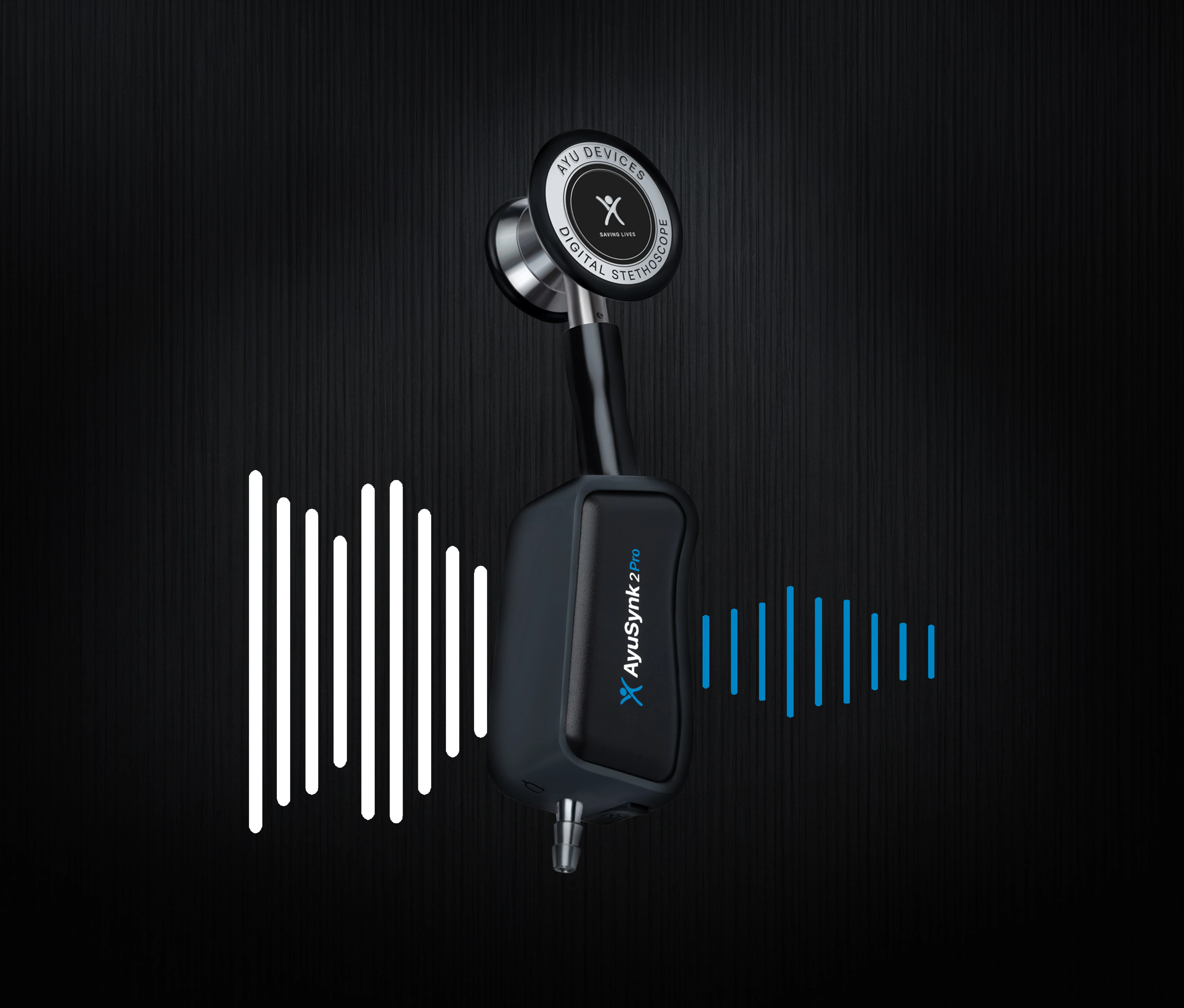What Makes a Medical Device Truly Smart? Enhancing Audio Auscultation with AI & Filters

Introduction
When we hear the word “smart” in technology, we think of devices that go beyond their basic function, like phones that are more than just for calls, TVs that stream, control, and learn your preferences, or watches that monitor your health. In medicine, “smart” is starting to mean the same thing: tools that not only perform their core job but also analyze, connect, and enhance what professionals can do.
In the world of auscultation, the practice of listening to the internal sounds of the body, this evolution has been dramatic. The humble stethoscope, once purely analog, is now becoming a digital electronic stethoscope with artificial intelligence (AI), sound filters, and cloud connectivity. This change is not just cosmetic. It’s about clearer sounds, better interpretations, and giving doctors tools that help them make decisions faster and more accurately.
From Analog to Smart – The Journey of the Digital Stethoscope
The traditional stethoscope has served doctors for over 200 years, but it has its limitations. It depends entirely on the human ear. If the sound is faint, masked by background noise, or the clinician has even slight hearing loss, critical details can be missed.
The introduction of the digital electronic stethoscope changed that. These devices can:
- Amplify body sounds significantly
- Filter out unwanted noise
- Convert sounds into digital signals for recording and sharing
Signal processing technology, visual waveform displays, and multiple listening modes have turned what was once a simple listening tool into a powerful diagnostic partner.
What is an Online or Connected Stethoscope?
An online stethoscope (also called a connected stethoscope) takes things a step further. Not only can it capture and amplify sound, but it can also transmit that sound over the internet in real-time or store it in the cloud for later review.
Through telemedicine platforms, these stethoscopes can connect distances – for instance, a Kerala health worker records a patient’s heart sounds and streams them to a Delhi cardiologist for on-the-spot input.
- Remote consultations – a doctor can listen to a patient from hundreds of kilometers away
- Second opinions – recorded heart and lung sounds, along with reports, can be sent to specialists anywhere in the world.
- Cloud-based diagnosis – sounds stored with patient records for future comparison
For rural health workers and patients in underserved areas, this technology can mean getting expert input without the need for travel.

The AI Revolution in Audio Auscultation
The most exciting leap for the digital stethoscope is the arrival of AI. Modern devices can use built-in algorithms to detect and classify specific sounds like heart murmurs, wheezing in the lungs, or crackling that might indicate fluid buildup.
AI excels at pattern recognition, and in auscultation, that means:
- Spotting subtle anomalies that a human ear might miss
- Providing real-time alerts during examinations
- Reducing subjective differences between clinicians
While AI won’t replace the doctor’s judgment, it acts as an always-on assistant, helping catch things earlier and with more confidence.
Experience Patient Care Through the Cloud
Case Study: AyuSynk as a Smart Audio Auscultation Device
The AyuSynk 2Pro Advance and AyuSynk 2+ are strong examples of how smart features work in real practice.
With the AyuShare platform, clinicians can:
- Visualize heart and lung sounds as they’re being recorded
- Use AI screening tools to identify murmurs or other anomalies
- Store, share, and review auscultation sessions for follow-up

Benefits to Clinicians and Health Systems
The move to enhance audio auscultation medical devices benefits both individual doctors and larger health systems:
- Better accuracy – Amplified and filtered sounds reduce the chance of missing key findings
- Faster diagnosis – AI prompts and visual displays speed up interpretation
- Historical tracking – Archived recordings help track changes over time
- Inclusivity – Hearing-impaired professionals can rely on visual data as well as amplified audio
- Scalability – Large hospital networks can share data instantly between departments and locations
Conclusion
In today’s healthcare landscape, a stethoscope is more than just a listening tool. With AI, filters, amplification, and connectivity, the digital stethoscope has become a true partner in diagnosis.
A smart stethoscope isn’t defined by just being electronic. It’s defined by how well it helps doctors hear more clearly, interpret more accurately, and share more efficiently. For clinicians and healthcare providers, embracing these devices means modernizing care without losing the human touch.
The future is clear: enhanced audio auscultation devices will continue to redefine patient care. Whether you’re in a high-tech hospital or a rural clinic, the right smart stethoscope ensures every heartbeat and breath is heard loud and clear.










